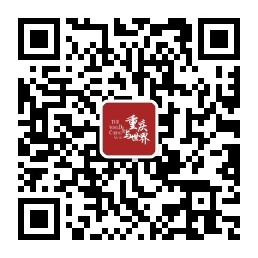
Carrying thousand years of Ba Culture and rejuvenated by the connection of intangible cultural heritage skills and modern technology, Tiger-knob Tea Container has become a Chongqing Foreign-Affairs Gift since 2024. Jointly produced by Chongqing Ba People Museum and Shuwenzhai Wood Carving Studio, this tea container is not only a containing vessel but also a cultural carrier for the Bayu culture to go global.
Recently, Chen Rui, the deputy curator of Chongqing Ba People Museum, shared the stories behind this foreign-affairs gift, including its design inspirations, cultural connotation and future plans.
Craftsmanship in Two Versions: The Dialogue between Intangible Cultural Heritage and Modern Technology
The tea caddy was originated from an occasional field study and it was also fruit of environmental protection and cultural inheritance considerations. “Staff from the Intangible Cultural Heritage Protection Center of JiuLongpo District often engage with inheritors of intangible cultural heritage. During one visit, they found that the wood scraps from Master Yang Hengqing’s woodcarvings were particularly suitable for making containers,” Chen Rui explained. This discovery coincided with the inclusion of “Traditional Tea Processing Techniques and Associated Social Practices in China” on UNESCO’s Representative List of the Intangible Cultural Heritage of Humanity. Integrating with the iconic tiger patterns of Ba Culture, the wooden caddy was thus initially designed.

The first version of wooden container fully shows the warmth of intangible cultural heritage craftsmanship. As a municipal-level representative inheritor of intangible cultural heritage and a master of arts and crafts, Yang Hengqing worked on each item totally manually. The body of the caddy is made of spalted maple and black-and-white ebony, while the lid is crafted from natural timber including African blackwood. Both parts will gradually and naturally get into shape after more than 180 days of natural setting by thermal expansion and contraction. The long term of waiting can help the wood fully reveal its character and achieve excellent quality of sealing and durability.
The top of the caddy lid is a white tiger-shaped knob, exquisitely carved from boxwood. As totem of Ba Culture, the white tiger vividly represents the thousand-year “tiger spirit” of the Ba people. What is more special is that each container is a unique masterpiece due to its entire handcraftship. The texture of the material and the carving details are all naturally presented through the craftsman’s superb skills, transforming wood pieces into a cultural treasure with both practical and collection values.
The success of the wooden caddy made the team recognize the potential of Ba Culture-related cultural and creative products. To better meet the market demand, in the first half of 2024, the 3D-printed version of the Tiger-knob Tea Container came into being. “The core highlight of this product is the white-tiger shape of the knob,” Chen Rui explained. The design team took the tiger on the representative relic of Ba Culture, Hu Niu Chun Yu, as prototype, utilized 3D printing technology to accurately replicate the tiger, and brought the dormant cultural-relic elements in museums back to life, achieving perfect integration of “traditional cultural relics plus modern technology”.
Cultural Essence: The Interaction between Bayu Memories and Contemporary Charm
“The essence of a foreign-affairs gift is to convey the uniqueness of local culture to foreign guests. The soul of the tiger-knob tea caddy lies in the Ba people’s culture of ‘worshiping the tiger’,” Chen Rui said. As the birthplace of Bayu Culture, Chongqing has a written history of more than 3000 years, and stories of “Ba” are always closely connected with “tigers”.
According to history, “Ba warriors were brave and sharp” and the ancient Ba people were known for their fighting skills. And in legends, when their first chief Lin Jun died, his soul transformed into a white tiger. Since then, the tiger has become the totem of the Ba people, integrated into all aspects of their life. In the archaeological excavations of Ba Culture in Chongqing, tiger-patterned and tiger-shaped artifacts are very common. Among them, Hu Niu Chun Yu is a representative, which was a bronze music instrument popular at the era of ancient Ba State and the knob at its top is a tiger, signaling the power and culture of the Ba people.
“The tiger design of the Tiger-knob Tea Container is just inspired by Hu Niu Chun Yu,” Chen Rui said. When international guests pick up this tea caddy, they can feel the delicacy of the material and craftsmanship, and they can appreciate the entrenched cultural roots of Chongqing as well through the stories concerning “the totem of white tiger” and “the history of the Ba people”.
Since its birth, the tea caddy has successively appeared on many cultural exchange platforms, such as the Chongqing International Travel Agent Conference 2024, the 13th China Beijing International Cultural & Creative Industry Expo, and 2024 Cultural and Natural Heritage Day Chongqing Main Event. Serving as a “business card” showcasing Chongqing’s unique charm, it has brought the Bayu culture into wider popularity.
Being selected as a 2024 Chongqing Foreign-Affairs Gift is undoubtedly a recognition of its cultural value and design philosophy. Chen Rui said, “Through display on diplomatic occasions, many foreign guests have shown interest in this cultural and creative product and are curious about the stories of the Ba people behind it.”
What the Tiger-knob Tea Container contains is the fragrance of tea, what it bears is the culture, and what it conveys is the city warmth of Chongqing. When it goes global as gift, the “tiger spirit” of the Ba people and the charm of Chongqing will also be imprinted on more people’s mind.
(This column is a Sino-foreign cultural exchange project jointly operated by The World & Chongqing and the College of International Studies, Southwest University.)

重庆与世界杂志社 Copyright 2000-2023 Cqworld.cn All Rights Reserved. 渝ICP备:05006161/渝公网安备50010302504769号
国内发行:重庆市报刊发行局\杂志社自发 | 国外发行:中国国际图书贸易总公司
地址:重庆市渝中区学田湾正街1号广场大厦11F,举报电话:023-68898926,违法和不良信息举报中心热线:12377

微信公众号